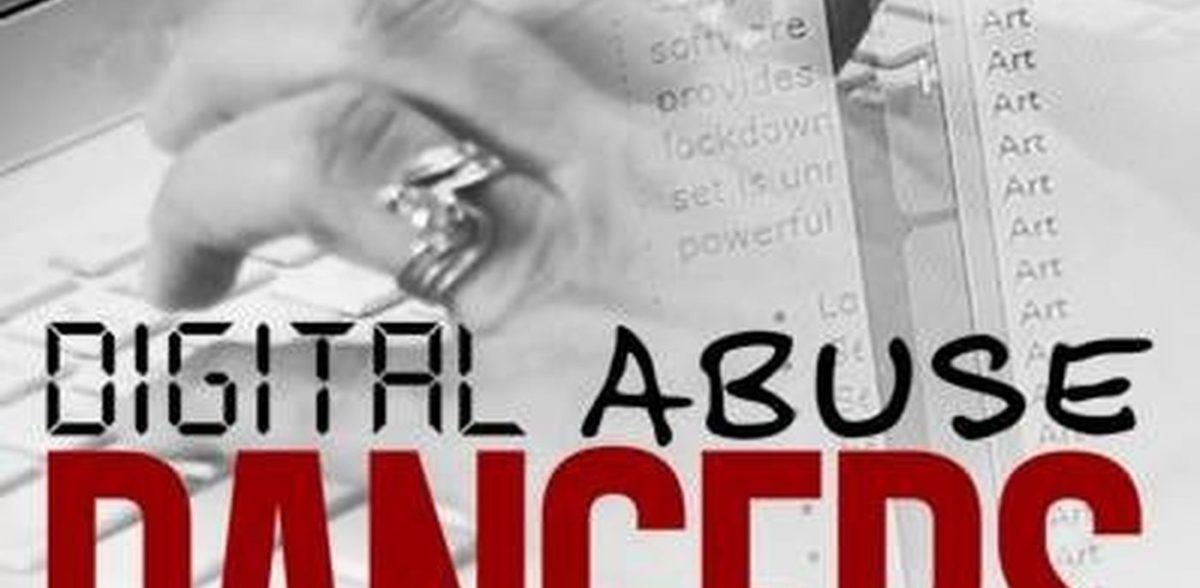Digital Abuse

Debarati Bhowmick is currently pursuing her post- graduation from Mumbai University. Dancing and writing are her passion. She writes short poems in my her time and she loves to interact with people from diverse backgrounds.
Digital Abuse
Digital connectivity can be a powerful and positive tool for communication and intimacy between romantic partners. However, when one partner resorts to digital means to hurt the other, it can have harmful consequences and this is what digital abuse includes. These days online platforms are being increasingly used as medium to commit domestic abuse. Online domestic abuse can include behavior such as monitoring of social media profiles or emails, abuse over various social media, sharing intimate photos or videos without one’s consent, using GPS locators or spyware, etc.
What does digital abuse include?
The most common ones include sexually harassing a partner online or by sending negative, insulting or threatening emails, messages or any other message online; controlling a partner’s social media accounts (e.g. demanding social media account passwords or determining who a partner can and cannot “Friend” on Facebook); requiring that a partner keep their phone with them at all times to respond to calls and texts; pressurising them to send explicit photos or videos and using technology to monitor the other person’s actions both on and offline. The most common abuse other than bullying over texts is stalking; According to the US Department of Justice, stalking is a pattern of behavior where “unwanted attention, harassment, contact, or conduct causes a reasonable person to feel fear.” Technology-assisted stalking involves the use of smartphones, GPS, social media, video/audio recording or other devices to monitor, intimidate, and control the victim.
Digital abuse, like other forms of abuse, is an attempt to control a partner’s actions.
Let’s face a fact, men and women were equally likely to have experienced digital domestic abuse, suggesting that we need to step beyond our assumptions that men are the only offenders and women are the only victims. According to findings of Psychology today; the burden of digital domestic abuse weighs more heavily on certain groups. Of particular note, people under 30 were three times as likely as people over 30 to have experienced digital harassment perpetrated by a partner. 38 percent of people who identified as lesbian, gay, and/or bisexual (LGB) had experienced digital domestic abuse. One has all the rights to live and love, hence it is really important for one (i.e. the victim) to know what their rights are; some of them do include:
- One’s partner should respect their relationship boundaries.
- It is not compulsory for one to share their passwords with anyone.
- Know and understand the privacy settings of social media forums well. Social networks such as Facebook allow the user to control how their information is shared and who has access to it. These are often customizable and are found in the privacy section of the site. Remember, registering for some applications (apps) require you to change your privacy settings.
- It’s okay to turn off your phone. One has the right to be alone and spend time with friends and family without your partner getting angry when you do not respond immediately.
- You do not have to text any pictures or statements that you are uncomfortable sending, especially nude or partially nude photos.
- Be mindful when using check-ins like Facebook Places and foursquare. Letting an abusive partner know where you are could be dangerous. Also, always ask friends if it’s okay for you to check them in. You never know if they are trying to keep their location secret.
Abuse online has many of the same behaviors as abuse offline. Digital abuse is…
- Coercive. When someone pressures or harasses you to do things that you are not comfortable doing, including sexual acts or favors.
- Controlling. When someone is dominating and attempts to control or gain power over you.
- Degrading. When someone belittles and devalues you. This includes humiliation in public places or social sites.
- Embarrassing. When someone threatens to share embarrassing information about you, or posts personal or intimate information in public places.
Digital dating abuse is an emerging form of dating violence thought to have serious health effects on young people. The effect of digital abuse may last long after the experience has ended. There are many cases of digital abuse, yet only few get reported. There is also a possibility that most people who have these experiences do not see themselves as victims of domestic abuse. Perhaps some may be concerned that their digital domestic abuse will not be taken seriously, or are uncomfortable reaching out for help despite their distress. Many might simply not be aware of the available support resources.
Digital abuse can be eradicated if we fight against it together and punish the culprits. There are various laws made by government to help the victims of this abuse. By arming ourselves with knowledge about what digital domestic abuse is and how widespread it has become, we are bringing this often hidden form of abuse out into the open. With increased awareness, the fight against domestic abuse, in all its forms, is strengthened.
Opinions expressed are of the writer.


